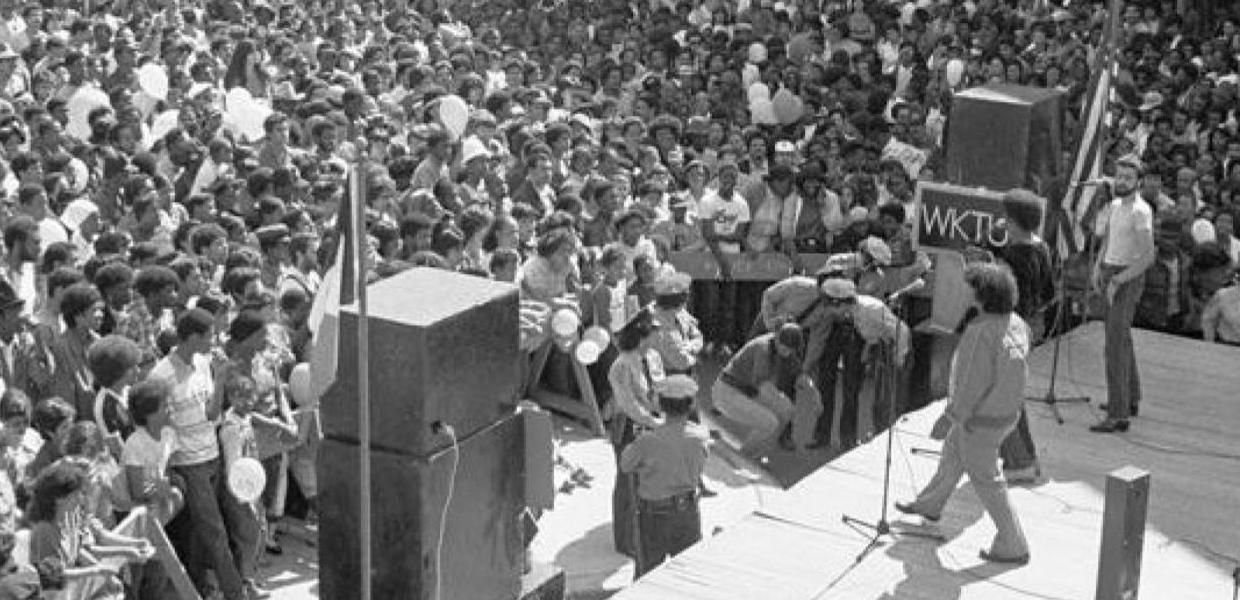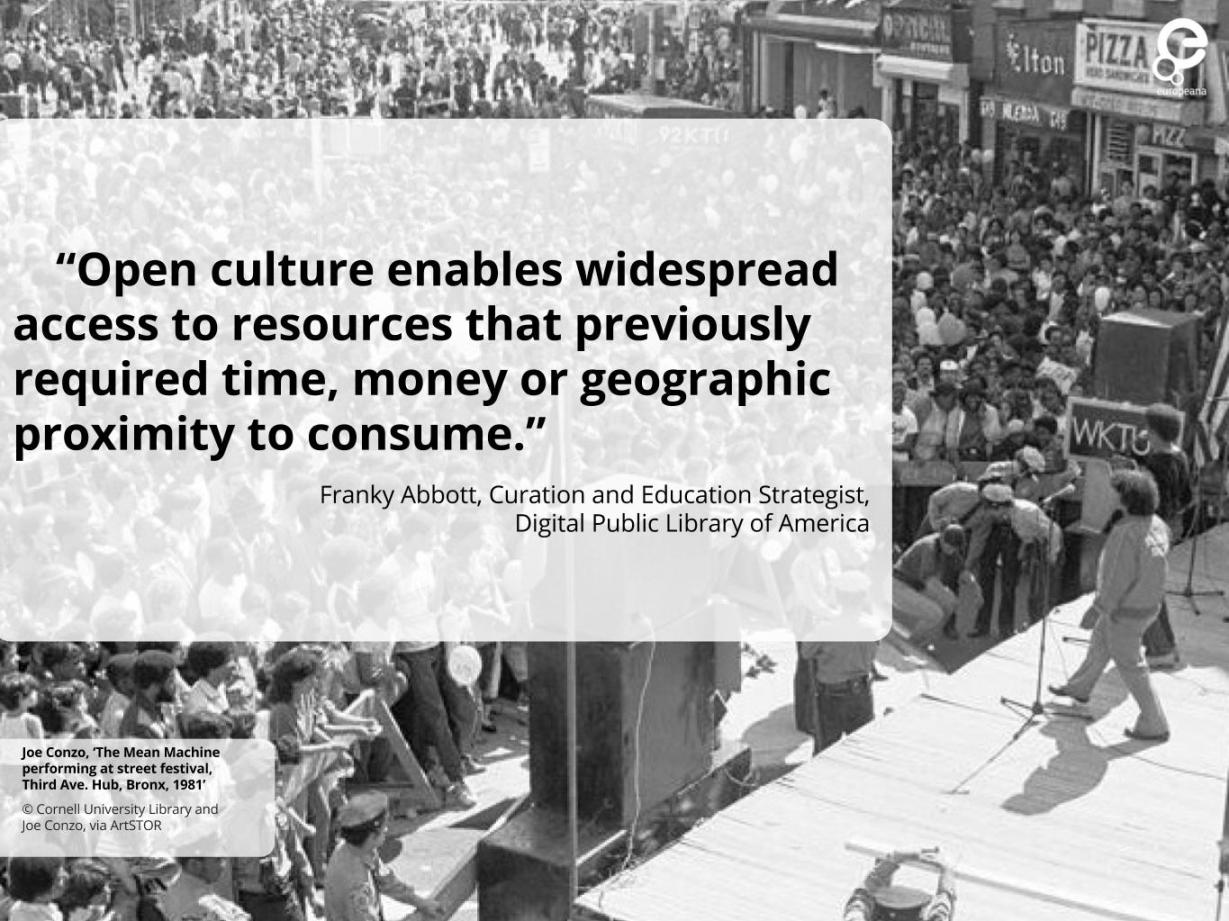Open culture in the USA - an interview with the DPLA’s Franky Abbott
As part of our 'open culture' blog mini-series, we talk to Franky Abbott, Curation and Education Strategist for the Digital Public Library of America.

- Title:
- The Mean Machine performing at street festival, Third Ave. Hub, Bronx, 1981.
- Creator:
- Joe Conzo
- Date:
- 1981
- Institution:
- © Cornell University and Joe Conzo
- Country:
- USA
This is a shortened version of an interview that we presented on the Year of Open website in September.
Why is open culture important to you?
Open culture enables widespread access to resources that previously required time, money, or geographic proximity to consume. Not only can anyone with an Internet connection access these resources for various kinds of research, they can use these resources to create and inspire new work.
Who benefits from open culture and how?
In the broadest terms, we all benefit from open culture! The kinds of new creative works, commentary, and research it enables benefit our ongoing dialogue about who we are, where we came from, and where we are going.
Can you tell us about a successful project using open culture resources?
My job is to use open culture resources to tell stories. For our Primary Source Sets, we work with a team of terrific educators from secondary and college teaching. We select primary sources from DPLA’s contributing institutions that give students important insight into people, places, events, and ideas that are part of their curriculum, like the Transatlantic Slave Trade and Social Realism. By asking teachers with expertise in teaching with primary sources to curate open culture resources for this purpose, we are helping a much larger pool of educators and students connect with materials they can use while eliminating time-consuming searching and sorting.
Why is it important for these resources to be available freely?
In the case of DPLA’s Primary Source Sets, it is important for these materials to be freely available because of their high instructional value as well as teachers’ natural practices of adapting and remixing content to serve the needs of a particular course, unit, or student. It is essential that educators have the flexibility to do this with educational material and open culture allows that to happen.

What is the future of open culture?
Platforms that host open culture resources often favour users with very specific research questions and search experience who are willing and/or expert enough to drill down through a huge quantity of content. I’d love to see the stewards of open culture focus in on organization, metadata for a global audience, subject groupings, storytelling, as ways to remove some of these challenges for users who will be less successful with laborious search and refine methods.
What cultural resources do you like to access online, personally?
I’m interested in the ways that open culture resources can give us access to untold stories and underrepresented communities. The Real Face of White Australia/Invisible Australians was one of the projects that got me deeply invested in this work.
Cornell University has made available a collection of more than 7,000 photographs by the American hip hop photographer Joe Conzo that are spectacular. I love those photographs and I’m so grateful that they are available for lots of people to learn from and enjoy.

